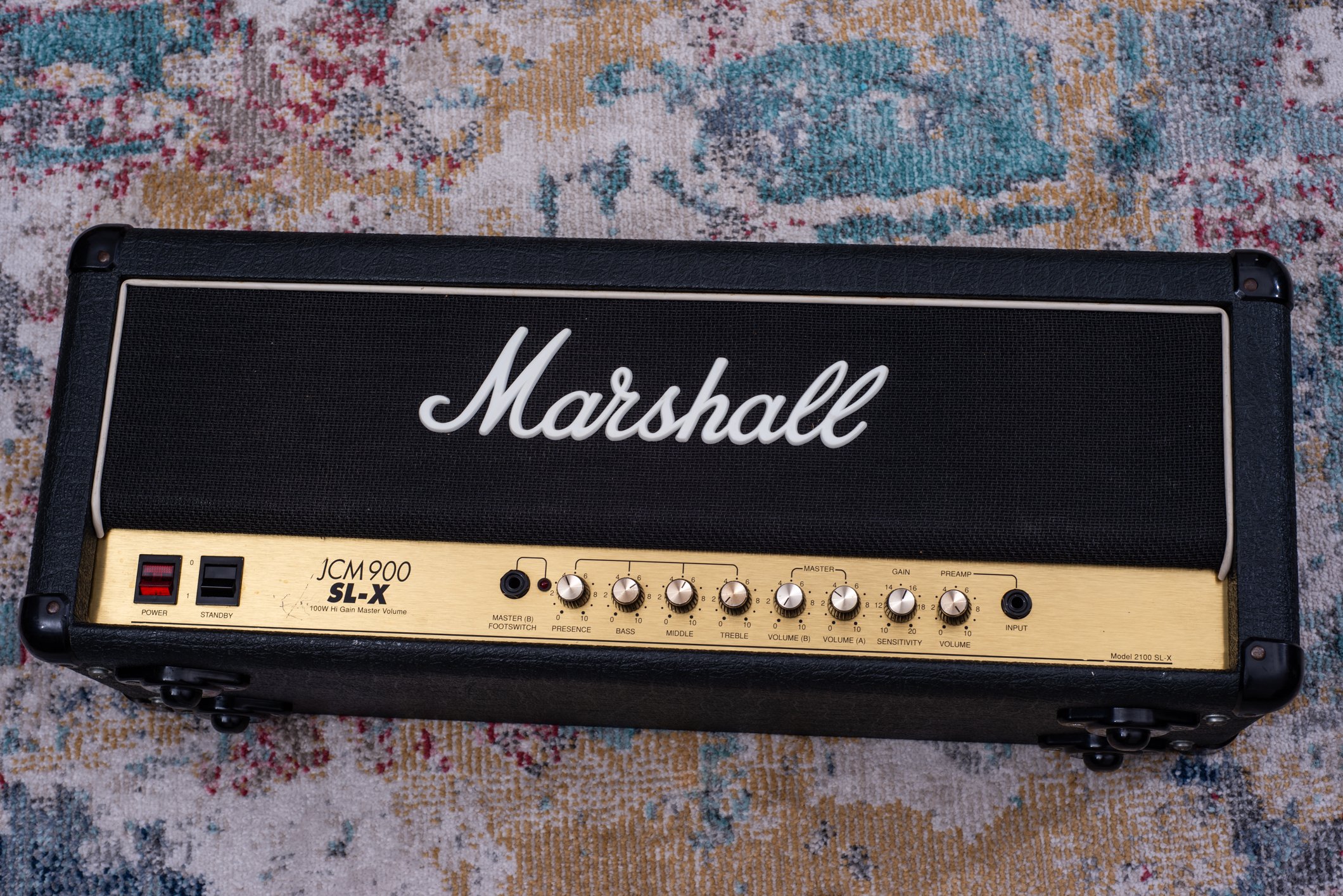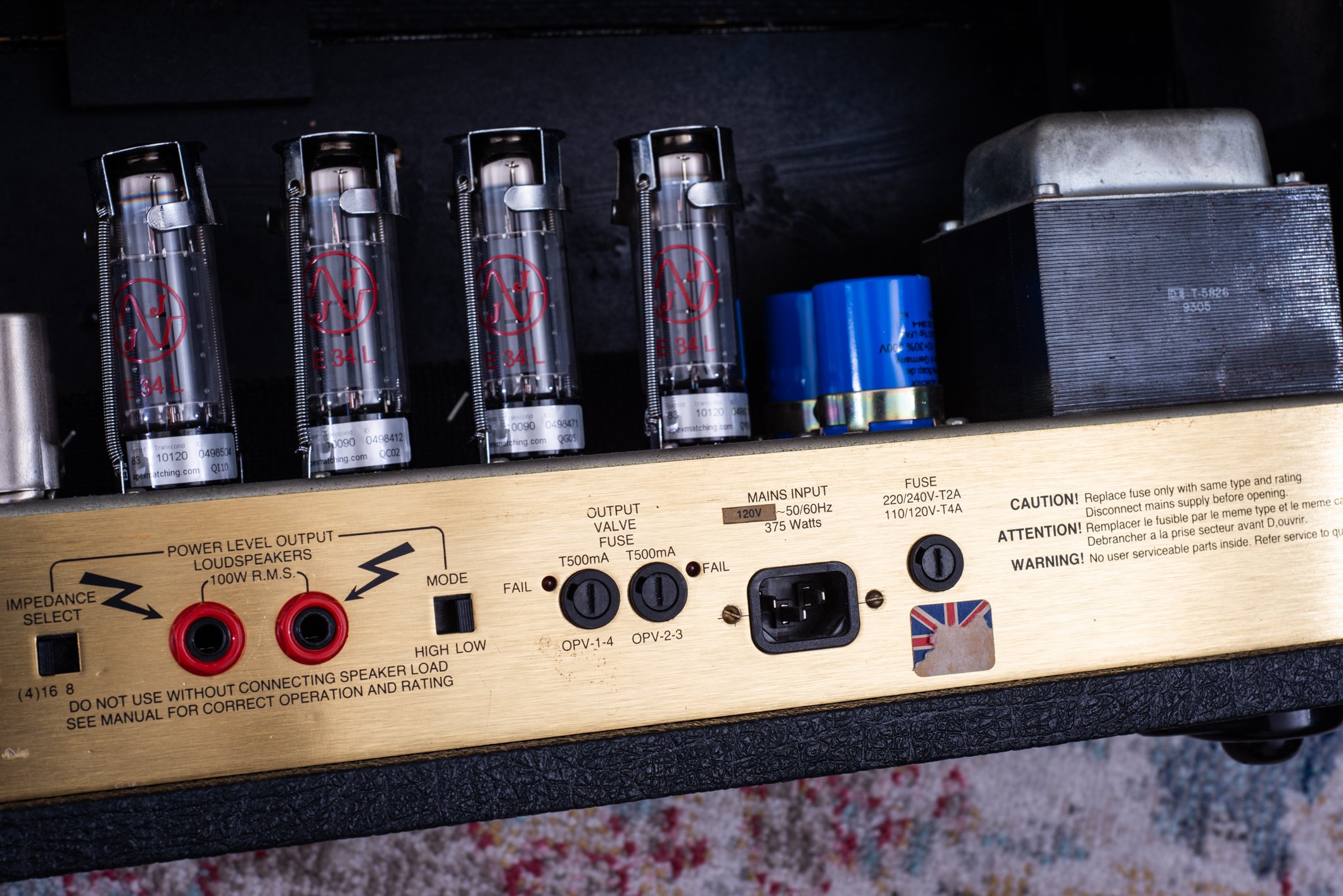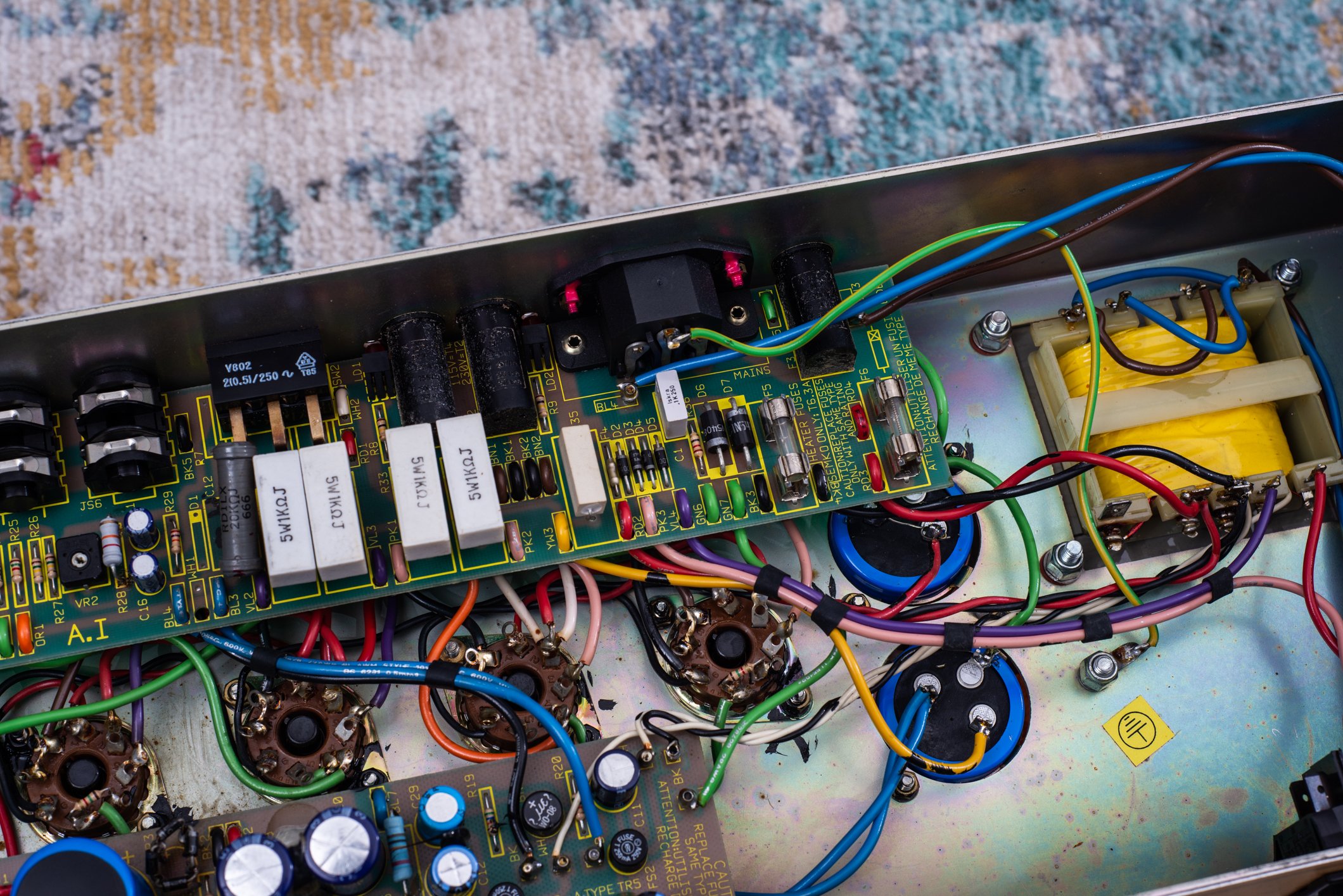1993 Marshall JCM900 SL-X Model 2100
Specs
Single Channel
100w Output
4x EL34 Power Tubes
4x 12AX7 Preamp tubes
V1A+B: First and second gain stages
V2A+B: Third and fourth gain stages
V3A: Fifth gain stage
V3B: Tone stack cathode follower
V4: Phase Inveter
Switchable master volumes
Overview
After the short lived run of the JCM900 Mk III, that amp was redesigned into the SL-X series in 1993. The two amps lines share the same control panel layout as well as model numbers, but they are quite different in sound and function. The main principle is the same - a single channel amp, with two master volume controls, and more gain provided to capitalize on the popular hot-rodded and modded Marshalls of the time.
While this amp shares the same preamp volume and gain sensitivity controls as the Mk III, they operate somewhat differently on this model. The preamp volume controls the primary gain of the amp, as usual, but the sensitivity controls the amount of signal going from tube stage 3 into stage 4. The biggest practical difference here is with so many more gain stages, the tone is smoother/refined sounding compared to the Mk III, and functionally, the sensitivity control cannot be turned off (“10”). This amp will always have five tube stages, even if this control is run lower, because some signal must always pass from 3 to 4 or the amp will go dead. This is different to the Mk III’s behavior, where this knob can be turned to zero without grounding out the signal completely, it just disables the diodes (which pass the signal without affecting it, like a wire).
Essentially, gain stages 3 and 4 take the place of the diodes in the Mk III and alter the tone as one would expect. I suppose if you could somehow connect diodes across the V2 tube slot instead of using a tube and its associated circuit, you could get very close to the previous design. Take a look at the diagram below (there’s a similar one on the Mk III page) to compare.
This particular amp has EL34’s in the power section, only available in 1993 or maybe 1994. Later SL-X models were equipped with 5881 tubes as EL34’s were in short supply, at least in terms of mass production amps. This helps this amp get a little closer to classic Marshall tones, but with so many gain stages and a very smooth gain sound, it’ll never nail it perfectly. That said, this amp has some really fantastic tones in it and a little less gain than I was led to believe at first. You’d think with 5 gain stages there’d be a lot of unusable gain, but it’s no modern high gainer, and won’t get saturated like say, a Peavey 5150/6505 or Mesa Rectifier, at least without a boost in front (even though those two amps came out the same year as the SLX). The midrange feels a little less present than older Marshalls, but I wouldn’t take away any points for that - in fact this amp really excels at what it sets out to do. Paired with what would’ve been the period correct speakers for this, Celestion G12T-75’s, it has a great, cutting rhythm tone. Since the amp is not so mid heavy, and the T75 speakers are also on the scooped side, kicking on something like an Ibanez Tubescreamer or Boss SD-1 really kicks this amp up in the mix. The added midrange from those pedals really shows through since the amp is so transparent, so it’s really a more noticeable effect compared to boosting other amps. My go-to example of the above is playing Aerosmith’s “Sweet Emotion,” during the rhythm parts I play the chords just using the amp’s drive, but during the breakdown part, I kick on the SD-1 and it adds a ton of thickness and midrange that kills for that type of sound.
Despite the more reserved midrange, the amp is not thin by any means. It has a nice thick bottom end that is full sounding without overpowering the room. It’s not “scooped” in the way one might interpret that in a modern metal amp sense. It’s really a pleasing balance and while I would recommend some other amps for exclusively modern rock and metal tones, there are some really fantastic tones in here and it’s quickly become one of my favorite heads.
















